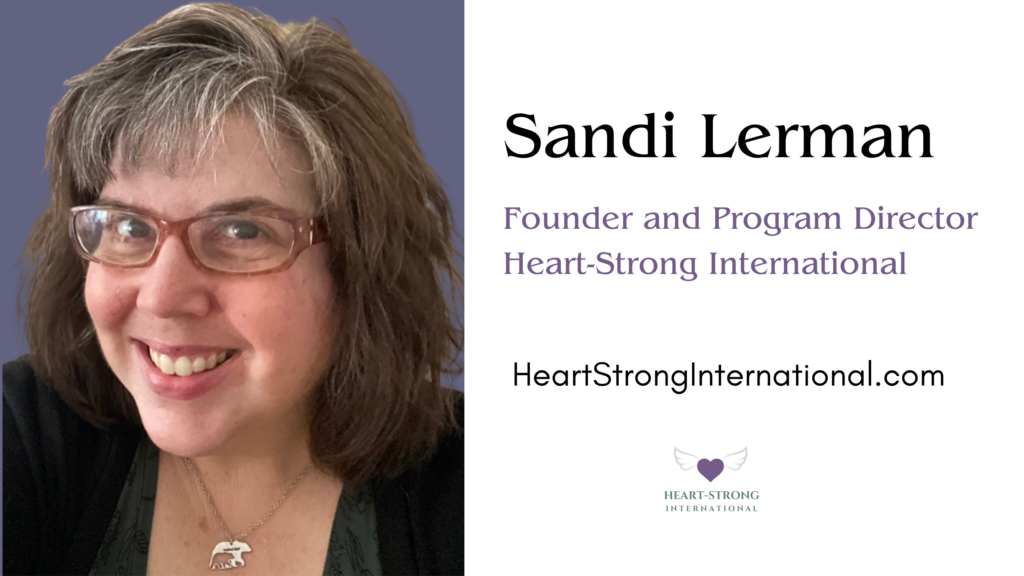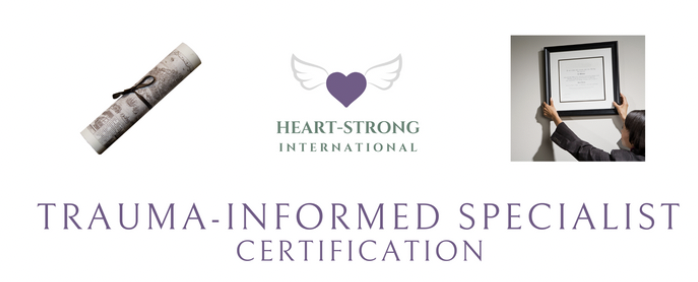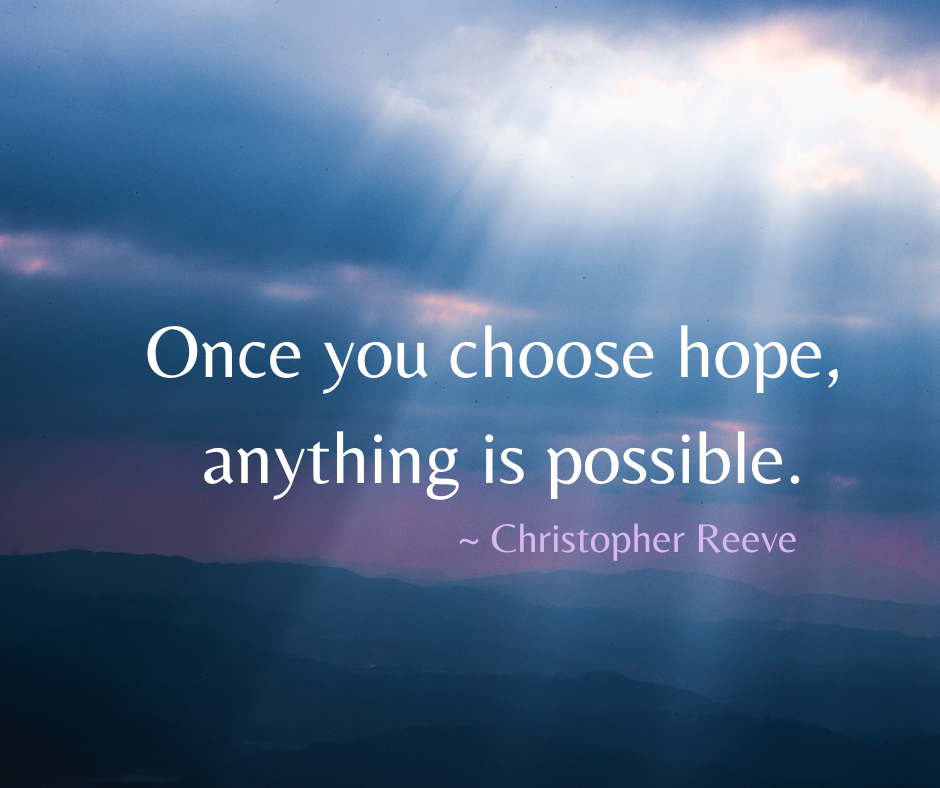
Weekly WINGS
Wisdom and Inspiration Nurturing Growth and Success
The Power of Hope
One of the most challenging things about parenting (and teaching) is creating and keeping a hopeful vision of a good future – both for our children, and for ourselves.
It can be so hard to remain positive and optimistic about our hopes and dreams for a child who is struggling. It’s especially discouraging when all we see on social media are the smiles of happy families spending time together on vacations, going to graduation parties, and going off to college.
With all the things that could potentially go wrong, it’s tempting just to stop dreaming completely so that we won’t be disappointed by the challenges and difficulties our children struggle with in our families and schools today.
But… when things look impossible and the odds are stacked against them, the only thing left is hope.
Sometimes, the tiniest glimmer of hope from a trusted adult who cares is all it takes to change the entire trajectory of a young person’s story.
As Christopher Reeve once said, “Once you choose hope, anything is possible.”
Here are HSI, we teach a specific strategy that infuses hope into the everyday conversations that we have with children we care for and care about.
We call this strategy telling “Optimistic Narratives of Growth.”
It’s all about helping the child really see and celebrate their own progress.
Instead of focusing on all they things they can’t do (yet), we help them to see how far they have come.
Most of us, whether we are children or adults, have a hard time seeing when we are doing things well, as our brains are wired by negativity bias to focus on the things that aren’t going well.
When we focus on what is going well, our kids learn to focus on that, too.
The magical thing about an ONG… is that what you focus on, grows.
How to Tell an ONG
In order to do this well, caring adults need to train themselves to always be on the lookout for tiny, incremental signs of growth and progress in emotional regulation, executive function, and other emerging skills.
Here’s an example…
Let’s say a child struggles with getting angry easily and often has meltdowns at even the slightest irritation from a sibling or a parental request.
An “ONG” might go like this…
Wow, (child’s name)…. I noticed that just now when your sister took the last cookie, you were a little bit upset about it and said “Hey! That’s mine!”… but then you took a deep breath, let her have it, and then asked me to give you another snack. I remember just a few months ago when you couldn’t be patient like that. You used to get very angry really fast, and sometimes you might even scream at her, grab the cookie, or throw something at her. But now you are being a lot more patient and finding other ways to get what you need. High five, (name or nickname)!
The “magic phrase” in this communication and efficacy-building strategy is using the sentence stem, “You used to _________, but now you ____________.”
When pointed out this way, over and over again, the child can see exactly what kind of emotional regulation progress they have made. It often gives them a sense of accomplishment and relief to know that the adult has noticed how hard they are working to stay regulated.
This doesn’t mean that the child is never going to have a meltdown again. Remember that growth goes in a spiral pathway… and we all have good days and bad days. But when we focus on what’s working, we will see it working more and more as a general pattern.
I remember in those early years of parenting it often felt awkward to say to my son something like this, “Wow, Hiro! I can tell you wanted to break that plate, but I see that you just thought about it and then took some time to pet the dog instead. You used to break things and hit people, but now you are such a thoughtful and gentle person. You are getting so much stronger!”
Every time I gave my son an honest and thoughtful ONG after a glimmer of success, I could see the tension in his face and body relax into the story of his accomplishment and self-worth. So I kept noticing and pointing out what he was doing well… and the more I did this, the more growth and healing I began to notice, too.
With lots of nurture and scaffolding with co-regulation and encouragement, kids will feel safe and secure knowing that they are capable of improving and that we are noticing each and every tiny step forward towards better communication and a stronger, more reciprocal and loving emotional connection.
As the child continues to build more self-regulation skills over time, we can continue to point out the progress and the growth instead of focusing on the fact that they aren’t perfect yet.
Say this mantra over and over… progress, not perfection.
Along with the ONG, I also like to add the phrase, “Wow… you are getting so strong in your ability to be (patient, caring, kind, thoughtful, etc.).”
Children often feel powerless, so telling them they are strong makes them feel powerful. They often think that the only way to be “strong” is being in physical control.
As adults, we know that it takes a lot of emotional courage and strength to regulate before we act on impulse. While providing a safety net of unconditional positive regard and hope, we can model, teach, and nurture emotional self-control and the qualities of compassion that we would like to encourage our children to learn.
Then, when they make mistakes, or have a hard day with a lot of emotional dysregulation, we can just reassure them that everyone makes mistakes
They key is to be sure that they story they are hearing from us is this:
Just because you make a mistake doesn’t mean you are a mistake.
(And by the way… that’s just as true for you as it is for your child.)
Stories Have Power
Renowned author and social science researcher Brené Brown says that “In the absence of information, we make up stories.”
Our children are constantly making up internal stories about who they are, whether they are worthy of belonging, if they are good enough, smart enough, pretty or handsome enough, or capable of finding their own pathway of happiness and success in the world.
By continuously nurturing them with plenty of Optimistic Narratives of Growth, we are installing a new story of who they are becoming.
This doesn’t stop with childhood.
Internal stories stick with us for years, and even to this day, most of us can remember the exact moments in childhood when something that someone said or did impacted us so deeply that it helped to shape the story of our own identity – whether positive or negative.
Be the caring adult that is constantly on the lookout for opportunities to tell stories of hope, possibility, and growth rather than constantly pointing out a child’s failure and mistakes.
The words we speak to our children can leave a legacy of self-worth and success or self-loathing and shame. Choose them well.

HSI Certification Programs
Enrollment is Now Open – Join us!
HSI provides world-class Trauma-Informed Certifications programs for Trauma-Informed Specialists, Certified Parent Coaches, and Certified Educational Trainers.
Become a confident, trusted expert, and earn up to 10 accredited graduate semester units from University of the Pacific!
Enrollment is now open, and for a limited time, there are partial scholarships available.
The Big Book List for Trauma-Informed Changemakers (first edition)
Did you get a copy of this book list, uniquely organized by the Heart-Strong Spiraling Stages of Growth? In it you’ll find a list of 111 books about real growth and transformation that happens in compassionate relationships… and, you’ll also get a bonus mini-course on how to start your own book study or book club!
I hope this Weekly WINGS has been helpful to you!
Hold onto hope, and keep speaking life with optimistic narratives of growth to your children AND to yourself… and I’ll see you right here again next week!


